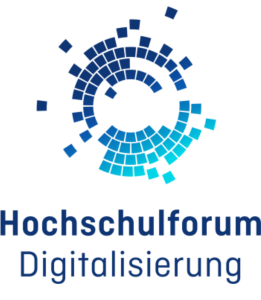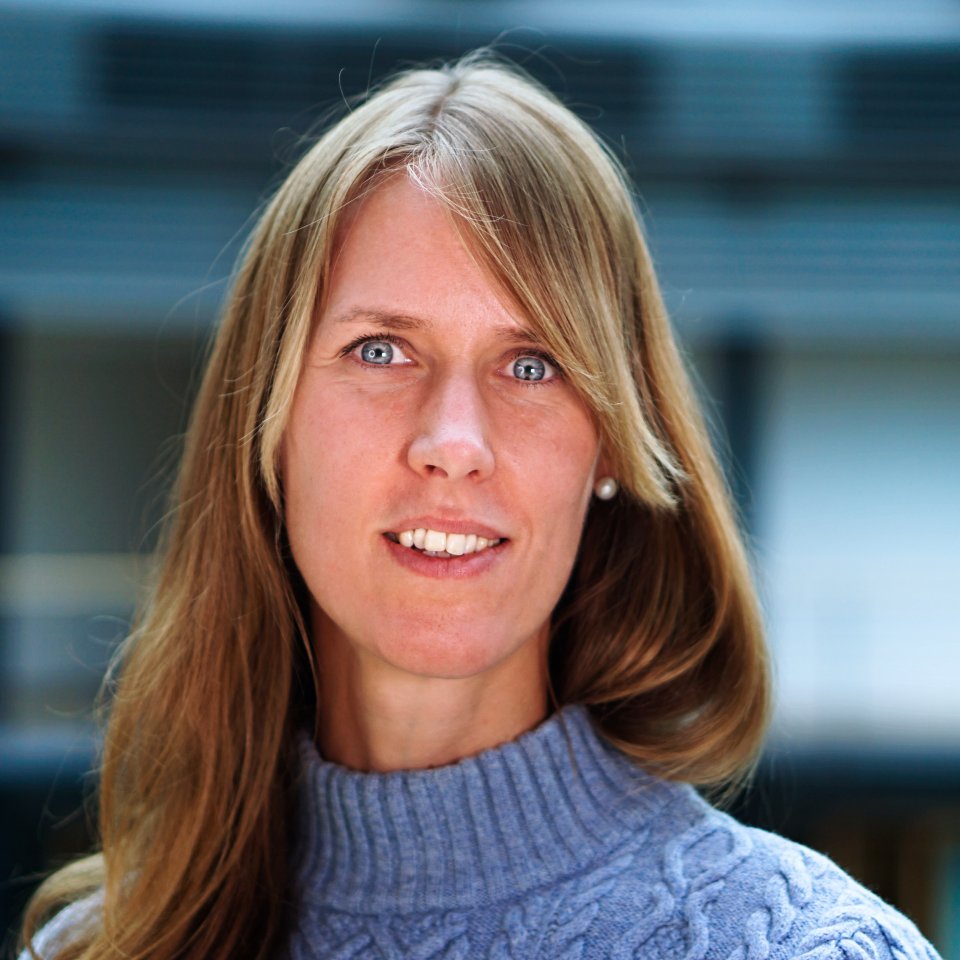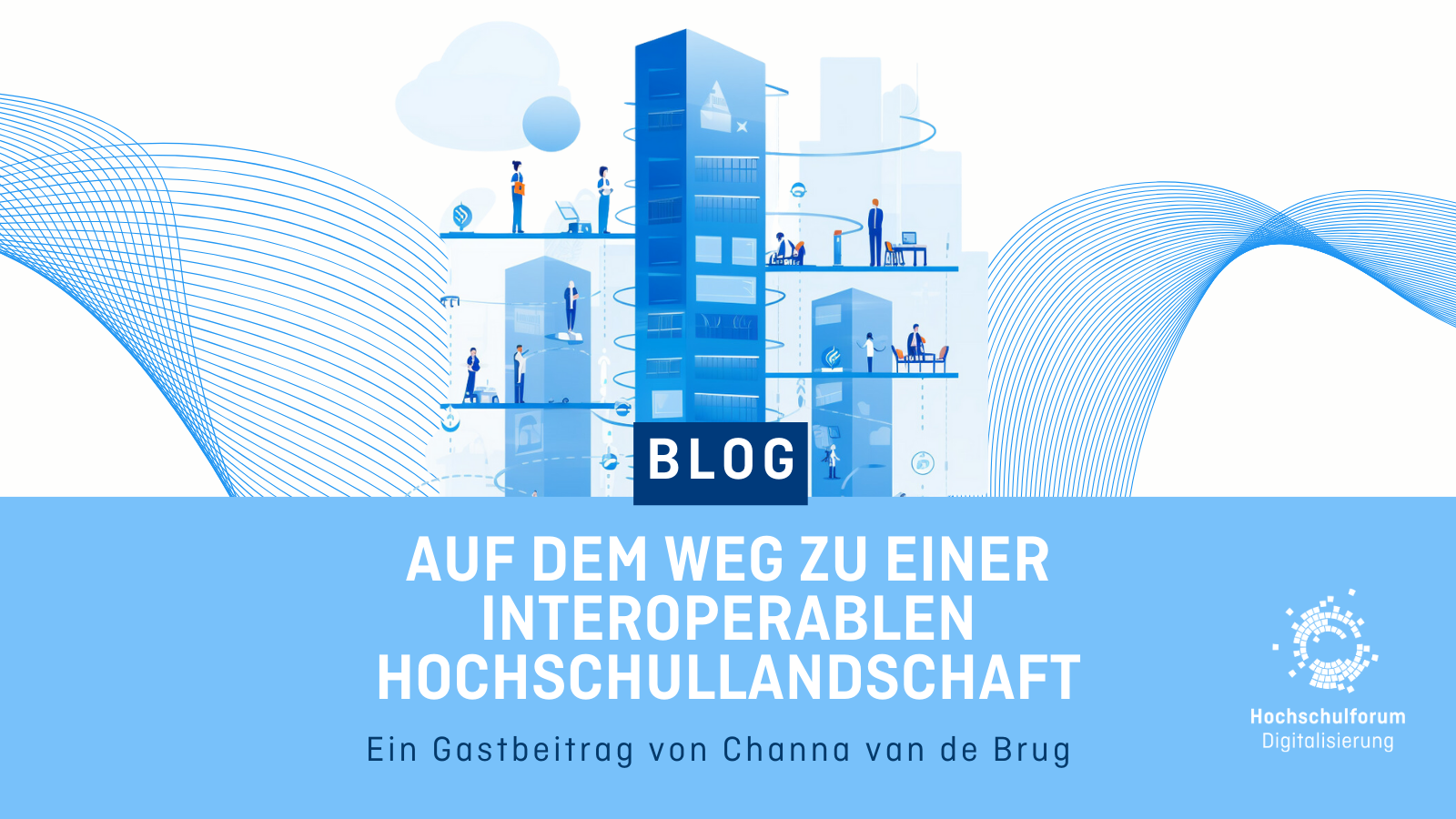Der schleichende Prozess der Digitalisierung von Hochschulen
Der schleichende Prozess der Digitalisierung von Hochschulen
05.12.19
„Ohne dass es die Hochschulen selbst wahrgenommen haben, sind sie daten- und softwaregetriebene Einrichtungen geworden. Das heißt sie benutzen in vielen Bereichen komplexe Softwaresysteme, in denen im großen Maß Daten entstehen, ohne dass diese Daten (abgesehen von der Forschung) einer Auswertung unterzogen werden.“ Dr. Hubertus Neuhausen, Direktor der Universitäts- und Stadtbibliothek Köln und Mitglied der ad-hoc AG „Hochschulbildung für das digitale Zeitalter im europäischen Kontext“, erläutert seine Sicht auf den Einfluss von allmählicher Digitalisierung auf Prozesse an Hochschulen.
1) Digitalisierung und Hochschulen
Fasst man komplexe Organisationen wie Hochschulen ins Auge, gibt es eine Vielzahl von Perspektiven, wie sie sich sinnvoll und mit Gewinn betrachten lassen. Der Begriff Digitalisierung wird in diesem Beitrag vorwiegend in Zusammenhang von Prozessen gebraucht. Wenn von der Digitalisierung der Hochschulen gesprochen wird, bedeutet es, dass die wesentlichen Prozesse einer Hochschule wie Lehre und Forschung sowie der Betrieb einer umfangreichen Infrastruktur zunehmend mit Hilfe von Software, Daten und der erforderlichen Hardware durchgeführt werden. Dabei nimmt die Komplexität dieser Softwaresysteme weiter zu. Das klingt im ersten Moment sehr trivial, geradezu banal, aber diese Entwicklung hat sowohl in unser aller täglichen Leben als auch im Alltag von Hochschulen eine erhebliche verändernde Wirkung.
Diese Veränderungen nehmen wir in der Regel nicht wahr. Sie geschehen sukzessive und schleichen sich in die tägliche Gewohnheit ein. Der Wirtschaftswissenschaftler Richard Baldwin bezeichnet diesen Prozess als die „iPhone-Infiltration“: Im Laufe der Jahre hat das iPhone schrittweise sein Servicespektrum ausgebaut. Wir haben diese Services Stück für Stück in unseren Alltag eingebaut, wie den Online-Kalender, die Mail-Funktion, die Textnachrichten, die Podcast- und Musik-App, etc., weil sie sehr bequem und nützlich sind. Viele Menschen fühlen sich mittlerweile ohne ihr Smartphone hilflos. Unser Verhalten hat sich im Laufe der Jahre erheblich verändert, ohne dass wir diesen Prozess als solchen wahrgenommen haben (Baldwin, 2019 S. 196-197). Die These dieses Beitrages ist, dass es – mutatis mutandis – in den Hochschulen genauso erfolgte.![Bild: [https://unsplash.com/photos/ewGMqs2tmJI Nathan Dumlao] Digitalisierung an Hochschulen - Symbolbild](/sites/default/files/images/blog/nathan-dumlao-ewGMqs2tmJI-unsplash.jpg)
In einer Hochschule gibt es in der Regel drei verschiedene „Geschäftsbereiche“, die unterschiedlichen „Logiken“ folgen:
- Akademische Lehre bzw. Ausbildung kann man – sehr vereinfacht – als ein „process business“ verstehen: Ehemalige Schüler*innen durchlaufen einen klar strukturierten Ablauf von Lehrveranstaltungen und verlassen die Universität als frisch examinierte Akademiker*innen.
- Wissenschaftliche Forschung lässt sich – ebenfalls sehr vereinfacht – als „solution shop“ auffassen: Eine konkrete wissenschaftliche Frage oder ein Problem wird untersucht, bis eine Lösung dafür gefunden wird.
- Erhebliche Infrastrukturen sind notwendig, damit Hochschulen Lehre und Forschung überhaupt erbringen können: Sie benötigen Verwaltungen und besitzen Liegenschaften. Sie betreiben Bibliotheken, Rechenzentren und Einrichtungen wie den Uni-Sport. Eine ganze Reihe von Unterorganisationen und eine große Anzahl von Mitarbeiter*innen sind notwendig, damit Hochschule überhaupt funktionieren kann. Hier könnte man von einem „facilitated network“ sprechen – analog zu einem Fitnessstudio, dessen Ausstattung man gegen eine monatliche Gebühr nutzen kann.
Auf Grund einer bald 200 Jahre alten Gewöhnung nehmen wir diese drei Bereiche in einer Hochschule nicht mehr getrennt wahr (Christensen, 2012 Min. 69-72). Sie interagieren im hohen Maße miteinander und bedingen sich gegenseitig.
2) Hochschulen als „Softwarelandschaften“
Jeder dieser drei Geschäftsbereiche digitalisiert sich auf eine sehr unterschiedliche Art und Weise:
- In der Forschung treten neben die klassischen Medien Buch und Zeitschrift vermehrt Software und Daten als Ergebnisse von Forschungsbemühungen. Big-Data-Analysen, Simulationen werden zu legitimen Forschungsmethoden. Softwarebasierte Großgeräte, die in großem Umfang Daten produzieren, bspw. im Bereich der Gensequenzierung verändern die Forschungslandschaft. Selbst die Geisteswissenschaften tun mit den Digital Humanities energische Schritte in diese Richtung (Expertenkommission Forschung und Innovation, 2019 S. 95-6; Deutsche Forschungsgemeinsschaft, 2018 S. 12-14; Gilch u. a., 2019 S. 43-46; RfII – Rat für Informationsinfrastrukturen, 2016 S. 9-18).
- Insoweit akademische Lehre forschendes Lernen impliziert, dringen die digitalen Instrumente und Methoden in den universitären Unterricht ein. Neben die klassischen Lehrformate Vorlesung und Seminar treten neue digitale Formen wie der Inverted Classroom (Gilch u. a., 2019 S. 49-54; Handke, 2014; Nacken, 2017).
![Bild: [https://unsplash.com/photos/466ENaLuhLY Markus Spiske] Hochschulen als Softwarelandschaft - Symbolbild](/sites/default/files/images/blog/markus-spiske-466ENaLuhLY-unsplash.jpg)
- Ein großer Teil der Infrastruktur wird mittlerweile mit Hilfe von Softwaresystemen wie bspw. im Bereich des Forschungsmanagement durch Forschungsinformationssysteme (FIS), im Bereich von Lehre und Studium durch Campus-Management-Systeme sowie E-Learning-Plattformen, im Bereich der Verwaltung durch umfassende Verwaltungssoftwares wie SAP erbracht (Thillosen, 2017 Min. 19-24).
Durch diesen Prozess werden Hochschulen (auch) zu technischen Ökosystemen (Hechler & Pasternack, 2017). Trotz seines umstürzenden Charakters wird der Gesamtprozess der Digitalisierung als solcher von Hochschulen nur sehr selten in den Blick genommen und einer Reflektion unterzogen. Eine echte Diskussion findet nur zum Thema Digitale Lehre statt. Ohne dass es die Hochschulen selbst wahrgenommen haben, sind sie daten- und softwaregetriebene Einrichtungen geworden. Das heißt sie benutzen in vielen Bereichen komplexe Softwaresysteme, in denen im großen Maß Daten entstehen, ohne dass diese Daten (abgesehen von der Forschung) einer Auswertung unterzogen werden.
In der Regel sind diese Softwareinstrumente durch die Initiativen von Interessengruppen eingeführt worden, um einem konkreten Bedarf gerecht zu werden, oder es stehen Projektmittel zur Verfügung, die für einen konkreten Anlass genutzt werden können. Meist waren diese Initiativen nicht in eine übergreifende Strategie eingebettet. Dadurch entstand in vielen Hochschulen eine Softwarelandschaft, die aus „Silos“ besteht, die meist nur sehr oberflächlich miteinander verknüpft sind. Das heißt es gibt ein komplexes Ökosystem von Softwares, das aber wenig integriert ist (Expertenkommission Forschung und Innovation, 2019 S. 101-102; Hechler & Pasternack, 2017 S. 10-14).
3) Hochschule als spezifischer Organisationstypus und dessen Auswirkungen auf die unterschiedlichen Digitalisierungsgeschwindigkeiten in den drei „Geschäftsbereichen“
Alle Hochschulen versuchen so zu werden, wie die wenigen international herausragenden Spitzenuniversitäten (Harvard und Stanford, Oxford und Cambridge, die ETH Zürich). Ohne es explizit zu machen, verhalten sich auch die Universitäten in Deutschland so, nicht zuletzt im Exzellenzwettbewerb (Heine, 2019; Wiarda, 2016). Das Idealbild ist die forschungsorientierte und drittmittelstarke Universität, die ihre Studierenden nah an der Forschung und möglichst auch selbst zu aktiven Wissenschaftler*innen ausbildet (Promotion, Habilitation). Die Forschungsuniversität ist für das Hochschulsystem der Leitstern, an dem sich das gesamte System in einem Wettbewerb zum Größeren und Besseren ausrichtet, bspw. wenn die Fachhochschulen sich um das Promotionsrecht bemühen (Christensen & Eyring, 2011 S. XIX-XXX und 3-30; Willets, 2017 S. 3-4, 36-39).
![Bild: [https://unsplash.com/photos/e3Uy4k7ooYk Davide Cantelli] Hochschulen als Organisation - Symbolbild](/sites/default/files/images/blog/davide-cantelli-e3Uy4k7ooYk-unsplash.jpg) Betrachtet man Universität als spezifischen Typus von Organisation, dann weisen Universitäten eine sehr viel geringere Kohäsion bzw. einen viel geringen Grad an integrierter Struktur auf, als es von außen erscheint. Clark Kerr, Präsident der University of California von 1958-1967, bezeichnete Universitäten sehr treffend als „a series of faculty entrepreneurs held together by a common grievance over parking“ (zitiert nach Willets, 2017 S. 34). Universitäten kann man als eine Ansammlung von Wissenschafts- bzw. Forschungsentrepreneur*innen und –kleinunternehmen (Projekte, Lehrstühle und Institute) verstehen, die sich in dem großen Wettbewerb um Karrierechancen, finanzielle Mittel und Prestige, der Wissenschaft auch ist, optimal bewähren und erfolgreich sein wollen (Schimank, 2005 S. 148-149).
Betrachtet man Universität als spezifischen Typus von Organisation, dann weisen Universitäten eine sehr viel geringere Kohäsion bzw. einen viel geringen Grad an integrierter Struktur auf, als es von außen erscheint. Clark Kerr, Präsident der University of California von 1958-1967, bezeichnete Universitäten sehr treffend als „a series of faculty entrepreneurs held together by a common grievance over parking“ (zitiert nach Willets, 2017 S. 34). Universitäten kann man als eine Ansammlung von Wissenschafts- bzw. Forschungsentrepreneur*innen und –kleinunternehmen (Projekte, Lehrstühle und Institute) verstehen, die sich in dem großen Wettbewerb um Karrierechancen, finanzielle Mittel und Prestige, der Wissenschaft auch ist, optimal bewähren und erfolgreich sein wollen (Schimank, 2005 S. 148-149).
Daraus ergeben sich eine Reihe von Konsequenzen, die auch für die unterschiedlichen Dynamiken und Geschwindigkeiten in der Digitalisierung von Hochschulen sehr relevant sind:
- Die Mitglieder der Universitätsleitungen waren bzw. sind selbst erfolgreiche Wissenschaftsentrepreneur*innen, und sie werden von Wissenschaftsentrepreneur*innen gewählt (Roessler, 2019; Symanski, 2012; Wiarda, 2019a). Entscheidungen der Universitätsleitungen werden vorwiegend aus dieser Perspektive getroffen: Im Prioritätengefüge einer Universität hat die Forschung, insbesondere die Spitzenforschung die höchste Priorität.
- In allen Bereichen, die ihre Forschung betrifft, sind die Wissenschaftsentrepreneur*innen hoch agil und integrieren mit der größten Bereitschaft auch disruptive Entwicklungen, wie sie sich aus der Digitalisierung ergeben. Infolgedessen digitalisiert sich die Forschung mit sehr großer Geschwindigkeit: Beispielsweise seien hier die Bemühungen im Rahmen der Nationalen Forschungsdateninfrastruktur (NFDI) oder die Medizininformatik-Initiative erwähnt (Expertenkommission Forschung und Innovation, 2019 S. 95-96; Deutsche Forschungsgemeinsschaft, 2018 S. 12-14; Gilch u. a., 2019 S. 43-46).
- Weil die gleichen Wissenschaftsentrepreneur*innen nicht nur forschen, sondern auch lehren und im Rahmen der Selbstverwaltung die Universität leiten müssen, leben sie permanent in einem Zustand von struktureller Überforderung. Daher haben Fragen der Lehre, der Infrastruktur und deren Digitalisierung eine deutlich geringere Priorität und es gibt in diesen Bereichen nicht die gleiche Agilität wie in der Forschung. Um mit den eigenen Kräften wirtschaftlich umzugehen, sind Wissenschaftler*innen in den Bereichen Lehre und Infrastruktur häufig strukturkonservativ (Expertenkommission Forschung und Innovation, 2019 S. 97-98; Gilch u. a., 2019 S. 46-55; Persicke & Friedrich, 2016 S. 35-38).
4) Governance
Die Hochschulleitungen weisen in Umfragen dem Thema Digitalisierung eine hohe Bedeutung zu, eine intensivere Beschäftigung mit diesen Fragen begann aber erst in den letzten Jahren (Expertenkommission Forschung und Innovation, 2019 S. 92-94; Gilch u. a., 2019 S. 41-42, 63-64, 98-100; Persicke & Friedrich, 2016 S. 38; Schmid, Lutz, Radomski, & Behrens, 2017 S. 23-30). Auch wenn in den Hochschulen in den letzten Jahren vermehrt Chief Information Officers eingesetzt wurden, fehlt den Hochschulleitungen häufig eine „digitale“ Perspektive, also ein Bewusstsein dafür, dass Digitalisierung in allen Bereichen von Hochschulen tiefgreifende Veränderungen erforderlich macht.
Etwas zugespitzt kann man sagen, dass die Digitalisierung von Universitäten nicht nur ein technisches Projekt, das heißt die Einführung von technischen Systemen ist. Sie macht auch einen erheblichen Kulturwandel und eine weitreichende Organisationsentwicklung im Gesamtsystem Hochschule erforderlich. Eine Untersuchung hat gezeigt, dass es in Wirtschaftsunternehmen mindestens dreier „digital savvy board members“ bedarf, um eine nachhaltige und auf das gesamte Unternehmen gerichtete digitale Perspektive im Vorstand eines Unternehmens zu erzeugen (Weill, Apel, Woerner, & Banner, 2019). Es soll an dieser Stelle nicht geschmälert werden, was bisher auch von den Leitungen der Hochschulen im Bereich der Digitalisierung an vielen Standorten an Herausragendem geleistet wird. Fasst man aber ins Auge, wie sich in der Regel die Leitungen von Hochschulleitungen rekrutieren, dürfte ein „digital savvy“ Rektorat oder Präsidium eher die Ausnahme sein (Rienhoff, 2017 Min. 24.26-25.55; Roessler, 2019; Wiarda, 2019a, 2019b).![Bild: [https://unsplash.com/photos/eMP4sYPJ9x0 Sharon McCutcheon] Wissensmanagement - Symbolbild](/sites/default/files/images/blog/sharon-mccutcheon-eMP4sYPJ9x0-unsplash.jpg)
5) Ausblick
Drei „Gesetze“ der digitalen Technologie haben bereits eine enorme verändernde Wirkung:
- das Moore’sche Gesetz: Seit 1965 verdoppelt sich die Leistungsfähigkeit eines Computerchips ungefähr alle 18 Monate.
- das Gilder’sche Gesetz: Die Rate, mit der Daten übertragen werden können, ist höher als das Wachstum in der Leistung von Prozessoren in Computern (Moore`sches Gesetz). Das hat sich nicht als ganz zutreffend erwiesen, aber die geradezu explosionsartige Zunahme an Übertragungsleistung hat die enormen Zugriffsraten bspw. auf die sozialen Netzwerke oder Youtube erst möglich gemacht.
- das Varian’sche Gesetz: Von Zeit zu Zeit entstehen neue Technologien, die ein umfangreiches Set von Komponenten zur Verfügung stellen und durch immer wieder neue Kombinationen dieser Komponenten können neue Produkte entstehen. Sind diese Komponenten einmal da, setzen sie einen Technik-Boom frei, in dem sich die Innovator*innen durch die Möglichkeiten arbeiten.
Diese „Gesetze“ sind weiterhin wirksam. Das bedeutet, dass die Digitalisierung unverändert mit einer hohen Geschwindigkeit voranschreiten und eine große Veränderungsdynamik auf unser aller tägliches Leben, auf die Arbeitswelt sowie die wirtschaftlichen Prozesse und nicht zuletzt auf die Hochschulen behalten wird (Baldwin, 2019 S. 89-102; Friedman, 2016 S. 19-117). Eine Konsequenz ist, dass zuerst in England, zunehmend aber auch in Deutschland die Diskussion darüber beginnt, inwieweit die Hochschulen ihre Absolvent*innen ausreichend auf eine digitalisierte Arbeitswelt vorbereiten (bspw. Meyer-Guckel, Klier, Kirchherr & Winde, 2019; University UK, 2018).
6) Literaturhinweise:
Baldwin, R. (2019). The Globotics Upheaval. Globalization, Robotics and the Future of Work. London: Weidenfeld & Nicolson.
Christensen, C. (2012). Disruption in Higher Education. In Academic Partnership. Dallas, Texas: Youtube. Abgerufen von https://www.youtube.com/watch?v=yUGn5ZdrDoU
Christensen, C., & Eyring, H. J. (2011). The Innovative University : changing the DNA of Higher Education from the inside out. San Francisco: Jossey-Bass.
Expertenkommission Forschung und Innovation. (2019). Gutachten zur Forschung, Innovation und technischer Leistungsfähigkeit Deutschlands 2019. Abgerufen von https://www.e-fi.de/fileadmin/Gutachten_2019/EFI_Gutachten_2019.pdf
Forschungsgemeinsschaft, D.-D. (2018, März 15). Förderung von Informationsinfrastrukturen für die Wissenschaft.Ein Positionspapier der Deutschen Forschungsgemeinschaft. Abgerufen von https://www.dfg.de/download/pdf/foerderung/programme/lis/positionspapier_informationsinfrastrukturen.pdf
Friedman, T. L. (2016). Thank You for Being Late. London: Penguin.
Gilch, H., Beise, A. S., Krempkow, R., Müller, M., Stratmann, F., & Wannemacher, K. (2019). Digitalisierung der Hochschulen Ergebnisse einer Schwerpunktstudie für die Expertenkommission Forschung und Innovation (Studien zum deutschen Innovationssystem No. 14–2019). Berlin. Abgerufen von https://www.e-fi.de/fileadmin/Innovationsstudien_2019/StuDIS_14_2019.pdf
Handke, J. (2014). Die Hochschullehre im 21. Jahrhundert – vom Inverted Classroom zum MOOC. In C. for T. and L. (CTL) U. Wien (Hrsg.), CTL-Lecture. Wien: Youtube. Abgerufen von https://www.youtube.com/watch?v=3lDLe0r15uc
Hechler, D., & Pasternack, P. (2017). Das elektronische Hochschulökosystem. Die Hochschule, 26(1), 7–18.
Heine, H. (2019, Juli 5). Der Regierende Bürgermeister als Wissenschaftssenator. Wie Michael Müller aus Berlin eine Forschungsmetropole macht. Die Charité an der Weltspitze, ein deutsches Harvard aus Berlin – dem erfolgsarmen Senatschef Michael Müller ein Coup gelungen. Der Tagesspiegel. Abgerufen von https://www.tagesspiegel.de/themen/reportage/der-regierende-als-wissenschaftssenator-wie-michael-mueller-aus-berlin-eine-forschungsmetropole-macht/24526292.html
Meyer-Guckel, V., Klier, J., Kirchherr, J., & Winde, M. (2019). FUTURE SKILLS: STRATEGISCHE POTENZIALE FÜR HOCHSCHULEN (Future Skills Diskussionspapier No. 3). Essen. Abgerufen von https://www.stifterverband.org/medien/future-skills-strategische-potenziale-fuer-hochschulen
Nacken, H. (2017). Blended Learning für die Web 2.0 Generation. In C. for T. and L. (CTL) U. Wien (Hrsg.), CTL-Lecture. Wien: Youtube. Abgerufen von https://www.youtube.com/watch?v=kl8PcRLDOz4
Persicke, M., & Friedrich, J.-D. (2016). Lernen mit digitalen Medien aus Studierendenperspektive (Arbeitspapiere No. 17). Berlin. https://doi.org/10.1026/0033-3042/a000301
RfII – Rat für Informationsinfrastrukturen. (2016). Empfehlungen zu Strukturen, Prozessen und Finanzierung des Forschungsdatenmanagements in Deutschland. Göttingen. Abgerufen von http://www.rfii.de/download/rfii-empfehlungen-2016/
Rienhoff, O. (2017). Empfehlungen zum Aufbau des Forschungsdatenmanagements in Deutschland. Aufzeichnung eines Vortrages auf der ZKI-Tagung im Frühjahr 2017 in Köln. In ZKI-Tagung. Köln: Zentrum für Kommunikation und Informationsverarbeitung e.V. Abgerufen von https://opencast.uni-koeln.de/paella/ui/watch.html?id=66517bf5-dbdd-4d80-a674-7e4ad0a1f2b8
Roessler, I. (2019). Check – Universitätsleitungen in Deutschland. Stand Dezember 2018. Gütersloh. Abgerufen von http://www.che.de/downloads/CHECK_Universitaetsleitung_in_Deutschland.pdf
Schimank, U. (2005). Die akademische Profession und die Universitäten. „New Public Management“ und eine drohende Entprofessionalisierung. In T. Klatetzki & V. Tacke (Hrsg.), Organisation und Profession (S. 143–165). Wiesbaden: Verlag für Sozialwissenschaften.
Schmid, U., Lutz, G., Radomski, S., & Behrens, J. (2017). Die Hochschulen im digitalen Zeitalter (Monitor Digitale Bildung No. 2). Gütersloh. https://doi.org/10.11586/2017014
Symanski, U. (2012). Uni, wie tickst Du? Eine exemplarische Erhebung von organisationskulturellen Merkmalen an Universitäten im Zeitalter der Hochschulreform. Aachen: Publikationsserver der RWTH Aachen University. Abgerufen von http://publications.rwth-aachen.de/record/197558/files/4347.pdf
Thillosen, A. (2017). Digital (Re-)Turn. 20 Jahre E-Learning an Hochschulen in Deutschland- ein perspektivisches Fazit. In GML2– Grundfragen Multimedialen Lehrens und Lernens. Berlin: Center für Digitale Systeme (CeDIS) E-Learning, E-Research, Multimedia – Freie Universität Berlin. Abgerufen von http://www.gml-2017.de/mediathek/thillosen/index.html?autostart=1.
University UK. (2018). SOLVING FUTURE SKILLS CHALLENGES. London. Abgerufen von https://www.universitiesuk.ac.uk/policy-and-analysis/reports/Documents/2018/solving-future-skills-challenges.pdf
Weill, P., Apel, T., Woerner, S. L., & Banner, J. S. (2019). It Pays to Have a Digitally Savvy Board. MIT Sloan Management Review, 60(3), 41–45. Abgerufen von https://sloanreview.mit.edu/article/it-pays-to-have-a-digitally-savvy-board/
Wiarda, J.-M. (2016, März 23). Stanford-Präsident zur Exzellenzinitiative: Wir sind das falsche Vorbild. Blog von Jan-Martin Wiarda. Abgerufen von https://www.jmwiarda.de/2016/03/23/stanford-präsident-zur-exzellenzinitiative-wir-sind-das-falsche-vorbild/
Wiarda, J.-M. (2019a, Februar 7). 59, männlich, westdeutsch. Die deutschen Universitäten wollen dynamisch sein, vielfältig, international. Eine Studie zeigt nun die Realität in ihren Chefetagen. Blog von Jan Martin Wiarda. Abgerufen von https://www.jmwiarda.de/2019/02/06/59-männlich-deutsch/
Wiarda, J.-M. (2019b, November 5). 57, männlich, deutsch. Die Chefetagen der Fachhochschulen sind auf den ersten Blick erschreckend uniform besetzt. Beim genaueren Hinschauen zeigt sich zum Glück etwas mehr Diversität. Blog von Jan-Martin Wiarda. Abgerufen von https://www.jmwiarda.de/2019/11/05/57-männlich-deutsch/
Willets, D. (2017). A University Education. Oxford University Press.


 Channa van der Brug
Channa van der Brug 